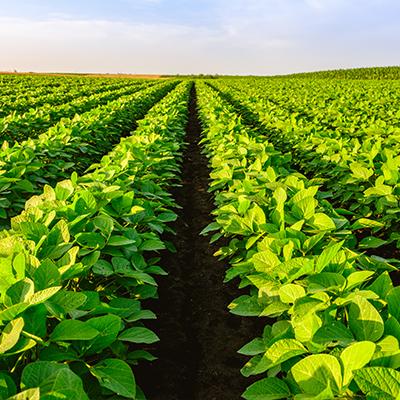Brazil’s soybean sector, always a colossal force within the realm of agricultural markets, is currently renewing its own boundaries. Crop forecasts for the 2024-25 season have not just crept upward—they’ve leapt. Analysts and crop agencies now assert that Brazil’s farmers are likely to produce somewhere around 167.37 million tonnes of soybeans this season, surpassing earlier estimates by over a million tonnes and eclipsing their own record harvest from two years prior. This fresh forecast signals more than just favorable weather patterns or technological innovation; it characterizes a landscape where global commerce, geopolitics, and evolving ecological conditions overlap in unpredictable ways.
With persistent rainfall drenching central and southern regions during December—effectively softening parched soil profiles—the country has witnessed robust planting and seedling establishment. There lingered some anxiety regarding western zones such as Paraná or Mato Grosso do Sul due to residual dryness. Yet heavier precipitation swept through these areas too (by week’s end), allowing even those laggard patches to enter vegetative development phases under relatively optimal conditions—a crucial aspect for minimizing pest infestations later.
Meanwhile, high-resolution satellite data continues confirming broad expansion across key producing territories: nearly 47.4 million hectares are now sown with soybeans, slipping past last year’s total despite minor setbacks in sowing intentions floated by some analysts in late November.
Brazil does not operate its soybean empire within isolation; external friction shapes internal strategies with surprising intensity. China, absorbing approximately two-thirds of Brazil’s exports most years, is recalibrating sourcing because of swift trade skirmishes with Washington D.C.. Import duties were recently leveled on U.S.-grown oilseed products as Beijing responded to new tariffs imposed on Chinese electronics and machinery. Not only does this channel additional volume toward Brazil but it also reinforces enduring trading relationships that tend toward equilibrium rather than volatility—even when diplomatic climates elsewhere oscillate between hostile or lukewarm.
As Brazilian soy output climbs higher along this curve—possibly hitting 173 million tonnes by next marketing year according to FAS projections—it inevitably commands attention from European markets seeking protein meal for livestock feed. Roughly one-seventh of South America’s shipments currently heads westward toward ports like Rotterdam or Hamburg each year. Attractiveness further boosted by an unhurried currency depreciation: the real remains weak amid tepid domestic economic expansion (which oddly aids exporters while making imported agricultural machinery pricier at home).
There exists an intriguing interplay between macroeconomics, environment policy incentives (such as converting low-yield pastureland into arable tracts), and fluctuating international alliances when considering acreage growth dynamics. This past decade alone has tallied up about a twenty percent rise in hectarage devoted solely to soy cultivation—partly at the expense of native grasslands increasingly seen as suboptimal assets compared with genetically improved cultivars yielding several metric tons per hectare under variable precipitation regimes.
Some domain insiders suggest consumption patterns among developing nations—not only China but southeast Asian tigers—could eventually exert more centrifugal force upon export flows than stasis-prone Western Europe ever could have mustered through Common Agricultural Policy directives alone; however, renewed EU regulations concerning deforestation-free supply chains injects complexity into contract negotiations waxing fraught each planting cycle.
It might sound contradictory after all that buoyancy: demand doesn’t always birth relentless upward arcs in local farm incomes since global bumper crops tend sometimes perversely mediate against rising prices via classic oversupply mechanics—even while volume metrics boast records. Still: approximately 105-112 million tons should ship out from Brazilian ports this marketing cycle—a figure not only sizeable but also subtly destabilizing for competitors wrestling inverse weather anomalies across North America or Argentina just now.
Curiously enough though—to ensure no rhythmic narrative closure dominates here—the fate of non-GMO exclusive production trails behind these headline numbers substantially; niche program SOJA LIVRE projects flatline volumes around 1.7 million tonnes for specialty markets struggling against mainstream momentum.
One might argue that “record” simply denotes another fleeting waypoint amid wider cycles shaped by fertilizer price spikes one quarter then biofuel policy shifts another—but such semantics recede beneath the sheer scale involved once silo doors crack open along Mato Grosso highways each February nightfall.
To summarize none too linearly: Profit margins fluctuate year-to-year based on yield variability plus swings in ocean freight indexes; Chinese crushers hunger yet shows no sign they’ll truly retreat anytime soon given prevailing tariff arrangements versus North American providers either shrinking slightly from market share loss or reinvesting heavily upon agronomic R&D instead.
The unexpected thrust comes full circle back home again—where debates abound whether expanding productivity enhances national sovereignty over agri-food systems—or merely cements dependency upon far-off purchasers whose priorities shift unexpectedly even during otherwise stable harvest windows. Where will the pendulum next pause? If history serves right—it rarely stays quiet longer than a soybean field after winter thunderheads fade away westward toward Bolivia’s borderlands.









